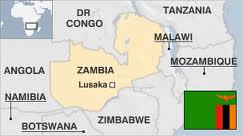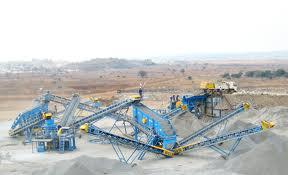The Ministry of Commerce, Trade and Industry and the Zambia Development Agency (ZDA) are the government institutions that help Zambian based companies succeed in international markets and assists overseas companies to bring high quality investments to Zambia’s rapidly growing economy.
WHY ZAMBIA?
Over the last decade Zambia has successfully turned the corner. Most evident is a commendable display of sustained growth, improved prosperity and easier market access for local and foreign investments. During this time economic growth has fluctuated between 6 and 7 percent, spurred by the expansion of the country’s mining, construction and service industries.
With good governance and a vigorous pursuit of sound macroeconomic policies, Zambia’s macroeconomic environment is stable and considered to be the most favourable in the region with structural changes relating to trade facilitation, public financial management, debt and aid management and financial sector deepening. All of which now culminate into the significant reduction in the cost of doing business.
Other key strengths that make Zambia an attractive investment destination include:
- An abundance of natural resources and manpower.
- Political stability since attaining its independence in 1964.
- The abolition of controls on: prices, interest rates, foreign exchange rates and free repatriation of debt repayments.100% repatriation of net profits.
- International standard as well as a well-developed Stock Exchange.
- Double Taxation Agreements with a number of European, North American, African and Asian countries.
- The establishment of Multi Facility Economic Zones (MFEZs).
- The acquisition of land by foreign entities facilitated by the Zambia Development Agency.
INVESTMENT OPPORTUNITIES
The Government is committed to diversifying the economy away from the mining sector while increasing the number of Public Private Partnerships (PPPs), improving the country’s infrastructure and public sector delivery.
The PPP Act was enforced in August 2009 under which the Government also encourages and accepts unsolicited bids from investors in any area of investment in all aspects of the economy.
In addition, the Government seeks strategic partners to promote increased rural investment in roads, rail, Information and Communication Technology (ICT), energy, water and sanitation, education and health, agriculture and manufacturing. Zambia remains the most sought after Foreign Direct Investment (FDI) destination.
The Vision 2030
The Zambian peoples vision and aspirations is to make the country a prosperous Middle Income Nation by 2030. It is in this regard that the Zambian Government came up with a national long term plan known as the Vision 2030 which long term development policy scenarios at different points for the next 20 years. The Vision is being operationalized through the five year developments plans starting with the just ended Fifth National Development Plan (FNDP) – (2006-2010) and annual budgets.
The socio-economic development objectives enshrined in the Vision 2030 are to attain and sustain annual real growth of 6 percent (2006-2010); 8 percent (2011-2015); 9 percent (2016-2020); and 10 percent between 2021 and 2030.
Other objectives include to attain and maintain a moderate inflation rate of 5 percent; to reduce national poverty head count to less than 20 percent of the population to reduce income inequalities measured Gini-coefficient of less than 40 percent; to provide secure access to safe water and improved sanitation facilities of 100 percent of the population across the country; to attain education for all; and to provide equitable access to quality health care to all by 2030.
The Sixth National Development Plan (SNDP)
The Zambian Government in 2011 launched and started implementing the Sixth National Development Plan which aims at actualizing the Vision 2030 of becoming “a prosperous Middle-Income nation by 2030”.
The theme of the SNDP is “sustained economic growth and poverty reduction”. The objectives of the SNDP are to accelerate infrastructure development, economic growth, and diversification, rural investment and poverty reduction, and enhance human development. The Plan also focuses on policies, strategies and programs that will contribute to addressing the challenges of realizing broad based pro-poor growth, employment creation, and human development. Strategies will include addressing the constraints of infrastructure and human development, reducing poverty levels and promoting rural development, stimulating agriculture productivity and promotion of agro-businesses, improving the provision of basic services such as water and sanitation, health, education and skills development. Investment in key economic infrastructure such as feeder roads, tourist access roads, electricity, water canals as well as cross cutting issues such as governance, gender, environment and disaster risk management will also be Government’s priorities.



